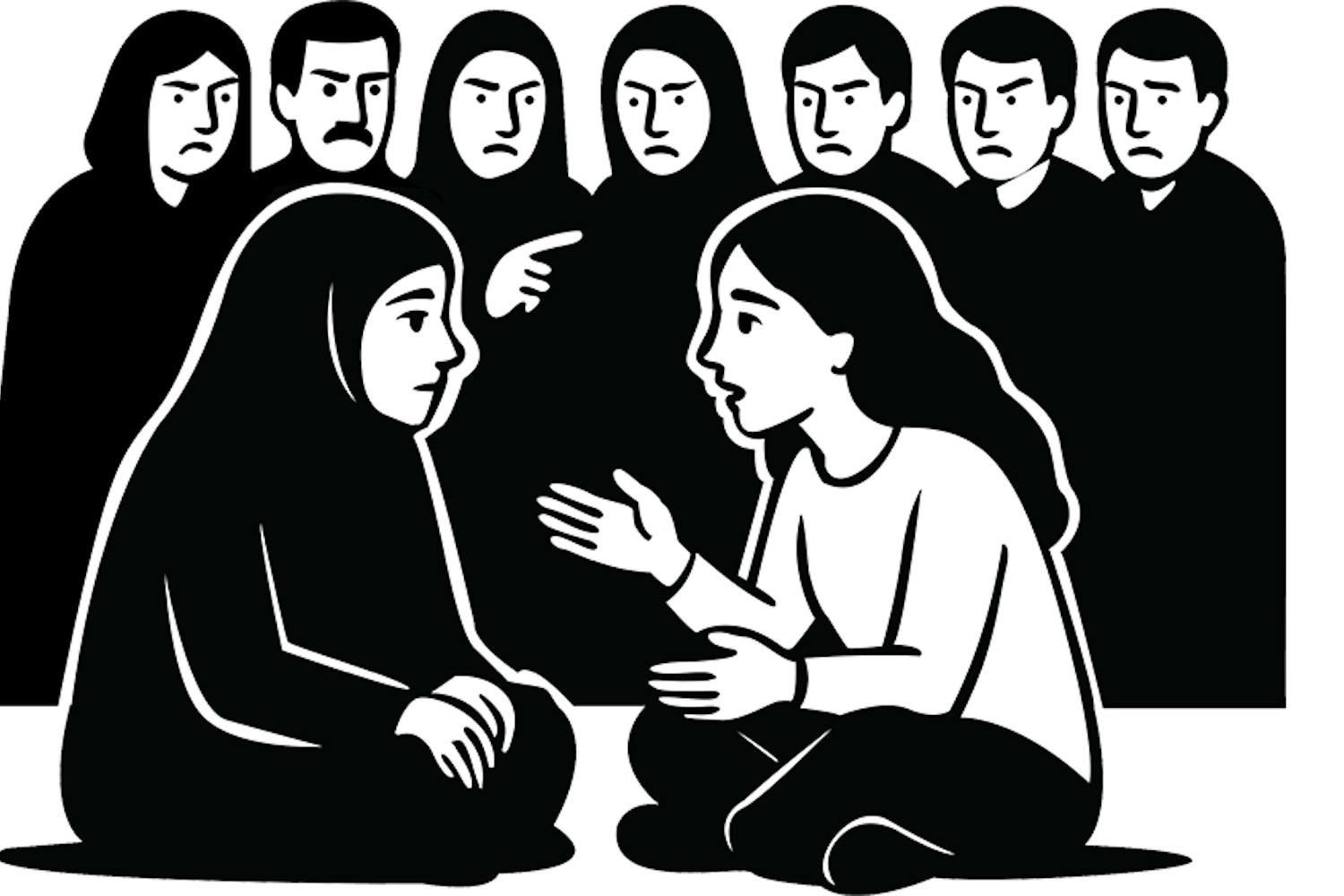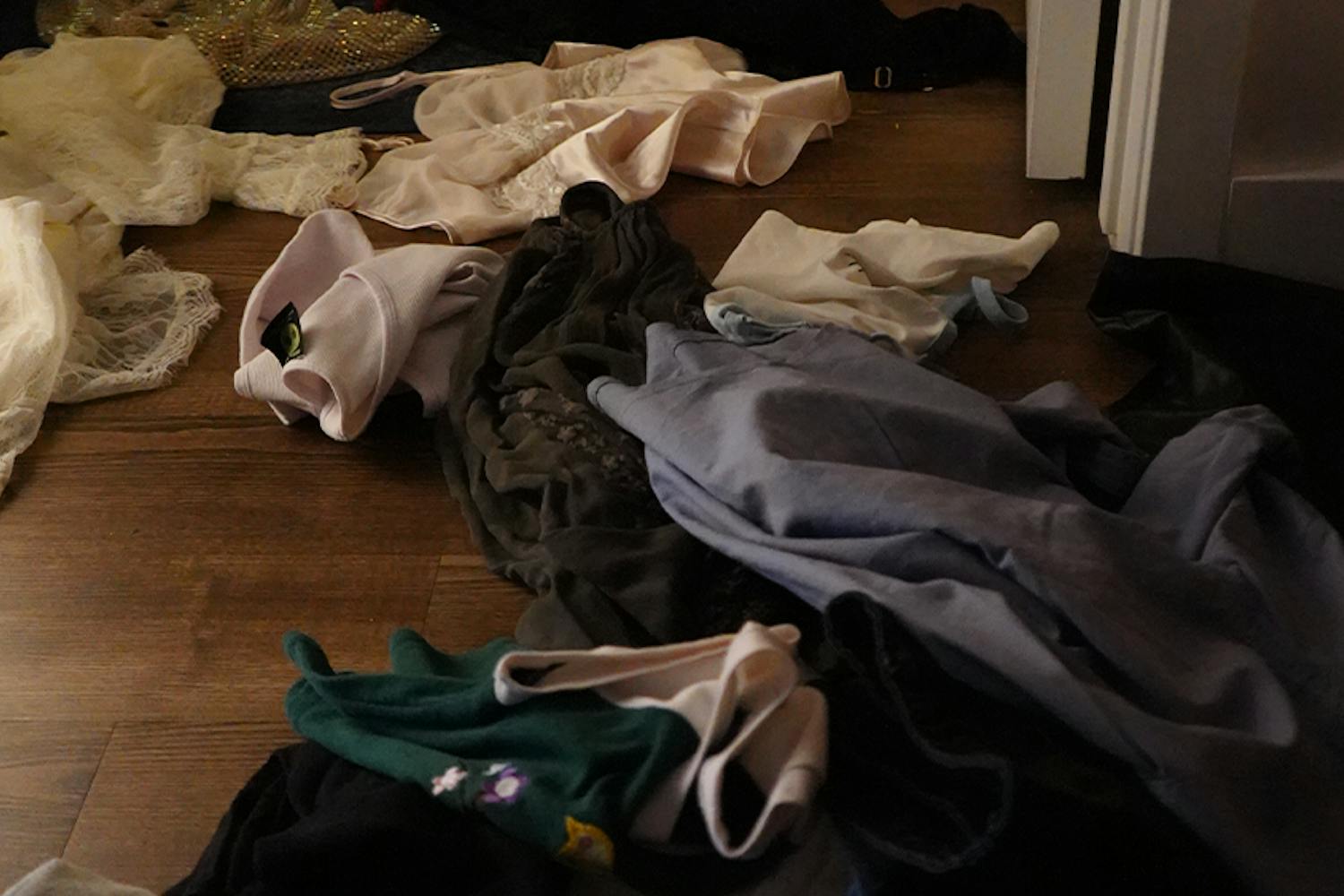Daniela*, a transfer student at ASU studying kinesiology, began her transition in April 2020.
Before then, she had lived most of her life presenting as a man. She joined the military. Got married. Worked. But none of that took the weight off her chest — the anger and anxiety she felt. She found relief when she started hormone therapy after being diagnosed with Klinefelter syndrome — meaning she has two X chromosomes and one Y chromosome — and gender dysphoria.
“I’ve never really thought of myself as a guy,” she said. “I felt like the term never fit.”
Since she started hormone therapy, she said food has tasted better, she sees colors in more vibrant hues, and she feels like people actually recognize her.
Her desire to transition wasn’t something newfound. She’d known there was something different about her since she was a child, but interactions with people around her — including a psychologist — made it difficult for her to come out.
“One of the psychologists said, ‘Well, you should really consider just living your life as a man because there’s no way that that can be changed,’” Daniela said. “That was kind of detrimental to hear as a child.”
After finalizing her divorce and leaving her job, Daniela realized she didn’t need to live for anyone else but herself and started her transition.
“I wasn’t hiding anymore,” Daniela said. “I definitely had a lot more confidence and was a lot less confrontational.”
Daniela wants to open a gym aimed at the LGBTQ+ community within the next 10 years. People in her community often don’t feel safe in the gym, she said, and she hopes to create a workout space that is safe and inclusive.
Still, she fears a gym explicitly identified as a space for the LGBTQ+ community could potentially become a target of hate crimes, and she doesn’t want to be publicly identified as a transgender woman because of the social and political complexities that come along with embracing the label.
“Would you have known?” she asked me when she first came in for our interview.
“No,” I said. And I wouldn’t have.
Daniela doesn’t hide her identity, but she doesn’t advertise it either — in case she becomes a target of discrimination or violence, she said. Between 2013 and 2020, more than 200 transgender and gender non-conforming individuals were killed in the U.S., according to a report from the Human Rights Campaign. In the report, the HRC wrote that, while each case is unique, “this epidemic disproportionately impacts trans women of color, who comprise approximately 4 in 5 of all anti-transgender homicides.”
Unsafe spaces
Edith Woods, a freshman studying anthropology, was walking to the light rail in January to attend a club meeting on campus when a man started yelling at her, calling her slurs. He chased her for a short distance until she was on the train. Even though she was in public with people clustered around her, no one said anything or did anything to help her.
“I felt completely alone in public,” she said.
Woods recently came out in December, and she said she’s become increasingly aware of her surroundings since then, constantly on guard in case she finds herself in a dangerous situation. Woods was stressed for months before coming out that her identity was going to become impossible for her to hide from her parents. Going home over winter break and being misgendered evoked a feeling of cognitive dissonance.
“It reached a boiling point,” she said.
Since coming out as trans and starting to transition, Woods’ mood has been gradually improving.
“I think this last year or so is probably just the most ambiently happy I’ve ever been in my life,” she said. “Transitioning is definitely the best thing that’s ever happened to me … As difficult as the process has been, it’s felt so intensely positive to finally feel like I’m living a more authentic version of myself. To feel as though I’m living a life that’s, if not what I want, closer to what I want.”
At ASU, she found it easy to change her name on her ID and found a supportive group in TransFam, an ASU club dedicated to helping transgender students find community and gain access to University resources.
Woods is often nervous about correcting people who misgender her or are disrespectful to her on campus because of Arizona’s political climate and the attitudes of some of ASU’s male students. She said she “can’t think of it in any other terms” than misogynistic and “vaguely bigoted bullshit.”
The ACLU is currently tracking 11 anti-LGBTQ+ bills in Arizona alone, including a bill that requires schools to notify parents about students’ gender or sexuality; a bill essentially preventing public entities — including public universities and community colleges — from holding diversity, equity and inclusion programs; a bill banning gender reassignment surgery and treatment for those under 18; and a bill prohibiting teachers in public schools from using students’ preferred pronouns without parental consent.
Charlotte Palfi, a former corporate lawyer and current ASU student studying computer science, came out as trans in December. She said she thinks the bills proposed in the state Legislature are forms of political posturing that are designed to make communities afraid — not to actually be passed into law.
“(These bills) give this sense that people don’t want you to exist,” Palfi said. A lot of people in the transgender community have a “feeling of relentless persecution and hatred” accentuated by these bills, she said.
Although these bills make her feel worried, she is more afraid of bills that are seemingly less problematic on the surface, but slowly cut away at access to healthcare, safe environments and resources.
“The most effective way to regulate a community is restricting its access to resources,” she said.
Despite ongoing efforts by the state Legislature to control trans people’s lives, Palfi said transphobic legislation will not change who she is.
“I’m afraid, but not in the sense that it’s going to stop me,” she said. “If anything, it’s going to make me want to spend more time supporting the community that I’m in.”
READ MORE: It's time for the University to divest from the New York Times
Access to resources
When Woods turned 18, she started hormones and therapy.
“I was able to exert, for the first time, agency over my own life in a lot of regards,” she said. “In terms of medication and making doctor’s appointments myself.”
Before she turned 18, Woods went through phases of fixating on her gender and then repressing those feelings.
“I kind of repetitively did that cycle until I finally turned 18,” she said. “I was trying to look forward at what the rest of my life looked like and I realized I did not want to do it as a man.”
She said her social transition took a little longer because her parents were “not exactly the most accepting when it comes to issues like that.” She initially hid her transition from them.
At Planned Parenthood in Arizona, patients ages 18 or older can receive gender-affirming care and hormone therapy prescriptions from licensed clinicians.
In March 2022, Arizona’s then-governor Doug Ducey signed into law a bill banning “irreversible gender reassignment surgery” for minors. SB 1138, which goes into effect on April 1 of this year, prevents health care professionals from providing gender affirming care to individuals under 18 years of age. At the time, then-Secretary of State Katie Hobbs released a statement condemning SB 1138 and another bill restricting trans athletes in the state.
Both Woods and Daniela said access to gender-affirming healthcare is already limited in Arizona. When Woods wanted to start hormones, she was put on a three-month waiting list before she got an appointment. ASU’s Transgender Voice and Communication Training — which provides voice therapy to people who want to change their voice to better suit their gender identity — has a yearlong waiting list, Woods said.
“Trying to find infrastructure here is a nightmare,” Daniela said.
She said she had difficulty finding a gynecologist who would see her; some pharmacies didn’t have the drugs she needed readily available. She also didn’t want to go to clinics identified as inclusive to trans patients due to fears of being targeted.
Daniela said access to transition-related healthcare saved her life.
“If the social dynamic were the same today as when I was younger, it’d go one of two ways: I would either transition DIY … or I’d be taking a dirt nap.”
*This source was identified by her middle name to protect her privacy.
Edited by Alexis Moulton, Camila Pedrosa, Sam Ellefson and Greta Forslund.
This story is part of The Spectrum Issue, which was released on April 5, 2023. See the entire publication here.
Reach the reporter at kbippus@asu.edu and follow @BippusKeetra on Twitter.
Like State Press Magazine on Facebook, follow @statepressmag on Twitter and Instagram and read our releases on Issuu.

Keetra Bippus is a reporter for State Press Magazine and a journalism student at Walter Cronkite School of Journalism and Mass Communication. She's previously reported for AZ Big Media and the Downtown Devil.




